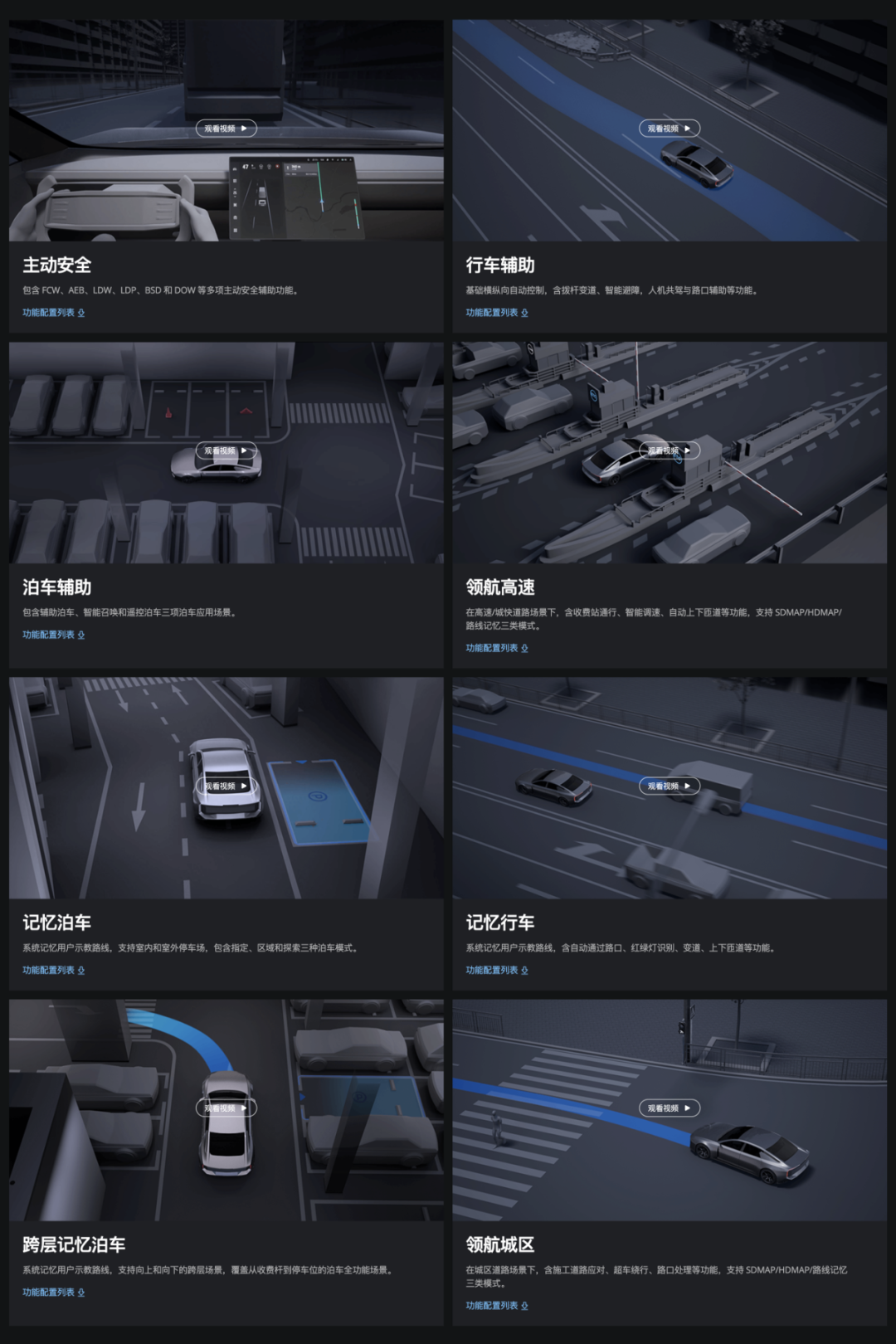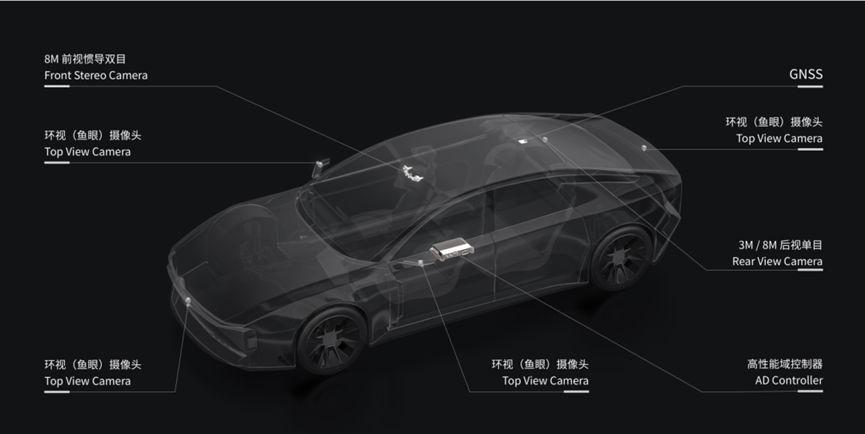DJI released a new version of their official website on February 16th, which updated their intelligent driving solution to include eight major functions: active safety, driving assistance, parking assistance, memory parking, memory driving, cross-layer memory parking, navigation on highways, and navigation in urban areas.
These functions cover the entire user journey of DJI’s intelligent driving in all scenarios, presenting a clearer direction of DJI’s technical evolution. This product matrix helps partners flexibly configure intelligent driving functions and necessary hardware structures when designing and developing intelligent driving models.

Active Safety: Based on the requirements for active safety in the NCAP regulations roadmap of C-NCAP 2021, E-NCAP 2021, E-NCAP 2023, and E-NCAP 2025, various active safety assistance functions are included such as FCW, AEB, LDW, BSD, and DOW.
Driving Assistance/Memory Driving: Provides core ADAS capabilities, including obstacle recognition of all categories, follow-up start-stop, adaptive cruise control, advanced lane keeping, close-range insertion response, lever lane changing, human-machine co-driving, etc. without relying on high-precision maps, lidars, and other external sensors, based on online perception.
Parking Assistance/Memory Parking/Cross-Layer Memory Parking: Realizes full-scene intelligent parking from toll gates to parking spaces, smoothly passing through cross-layer slopes and spiral bends based on binocular and panoramic fisheye sensors.
Navigation on Highways: Provides the capabilities of automatic on-off ramps, toll station passage, active overtaking, optimal lane selection, etc. under the scenarios of highways/city expressways, and supports SDMAP/HDMAP/route memory modes to achieve navigation assistance functions in the “toll station to toll station” scenario on high-speed closed roads.
Navigation in Urban Areas: Provides the capabilities of construction road handling, overtaking and bypassing, intersection processing, etc. under the scenarios of city roads, and supports SDMAP/HDMAP/route memory modes to achieve navigation assistance functions from point A to point B in the city.
Most of the intelligent driving functions only require one pair of forward-looking inertial navigation binocular cameras, four panoramic cameras, one rear-view camera, and a domain controller with matching computing power to achieve the corresponding hardware configuration. The advanced navigation driving functions only require an increase in the Global Navigation Satellite System (GNSS) and lightweight external data sources, which reflects DJI’s intelligent driving fundamental principle of using a basic hardware architecture to achieve core ADAS functions.
The 2023 KiWi EV previously launched by SAIC-GM-Wuling has been equipped with active safety, driving assistance, parking assistance and other functions supplied by DJI. Recently, the model has received its first OTA update, officially enabling the memory parking function. In addition, more mass production projects with different brands and configurations, equipped with DJI’s intelligent driving solutions, are advancing as planned.
This article is a translation by ChatGPT of a Chinese report from 42HOW. If you have any questions about it, please email bd@42how.com.
